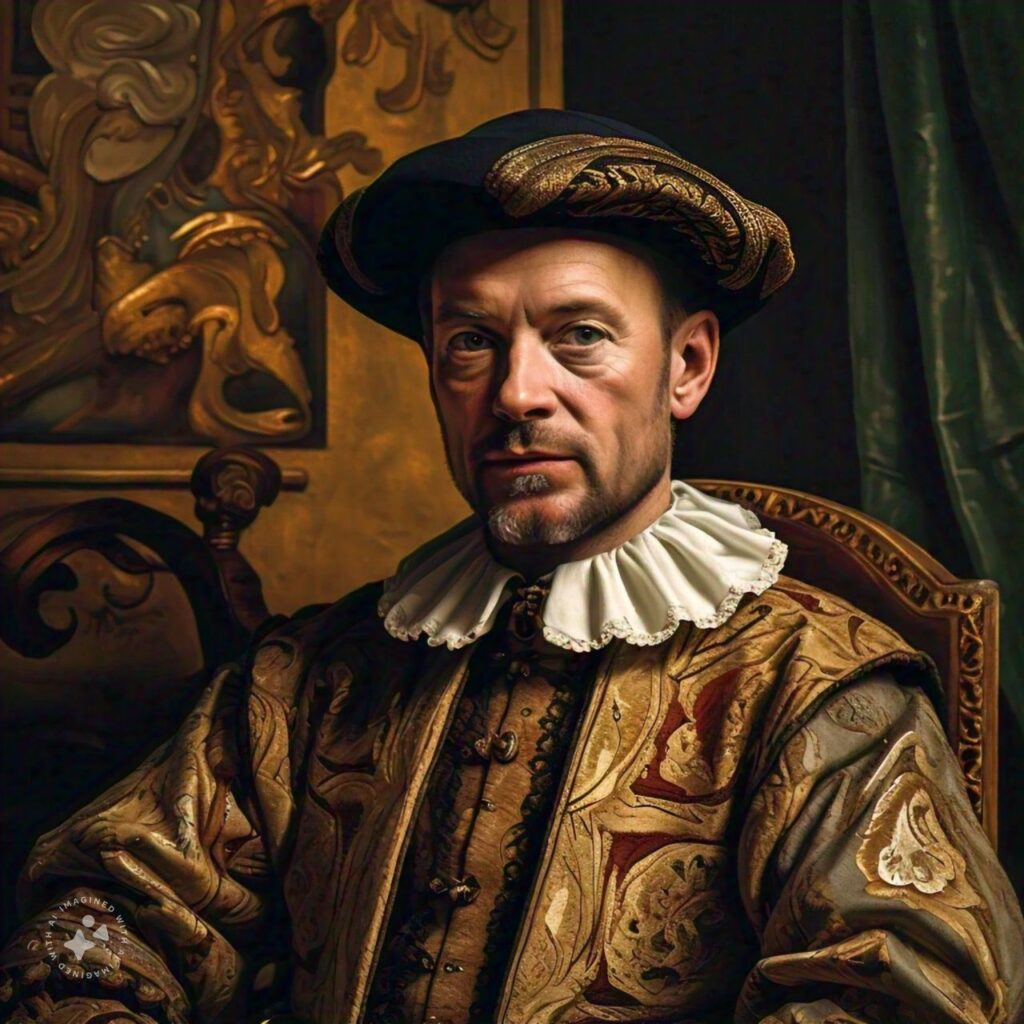In the realm of historical art, few pieces captivate the imagination quite like the 1555 Portrait Servais Germany. This artwork provides a window into the past and raises questions about its subjects and historical context. Our guide explores the significance, history, and enduring appeal of the 1555 Portrait ServaisGermany.
What is the 1555 Portrait Servais Germany?

The 1555 Portrait ServaisGermany is a fascinating historical painting created in the mid-16th century. The portrait is famous for its detailed depiction and historical significance, providing insight into the artistic and cultural landscape of Germany during that time.
Historical Context of the 1555Portrait Servais Germany
To appreciate the 1555Portrait Servais Germany, it’s essential to understand the historical context in which it was created:
- Renaissance Influence: The mid-16th century was a time of significant artistic development, influenced by the Renaissance. Artists sought to capture realism and detail in their work, reflecting a broader cultural movement towards individualism and humanism.
- Political and Social Climate: Germany in the 1550s was a region of political and social upheaval. The portrait represents the era’s complex dynamics and the shifting power structures within the Holy Roman Empire.
Artistic Features of the 1555 Portrait Servais Germany
The 1555Portrait Servais Germany is celebrated for several key artistic features:
- Detailed Realism: The portrait is noted for its meticulous attention to detail, capturing the subject’s attire, expression, and background with remarkable precision.
- Composition and Technique: The artist’s use of color, light, and shadow enhances the realism of the portrait, while the composition reflects the artistic conventions of the time.
- Symbolic Elements: The portrait may include symbolic elements that offer insights into the subject’s identity and status, reflecting the cultural and societal values of 16th-century Germany.
The Significance of the 1555Portrait Servais Germany
The 1555Portrait Servais Germany holds significant historical and cultural importance for several reasons:
A Window into 16th-Century Germany
This portrait provides valuable insights into the fashion, societal norms, and personal identities of 16th-century Germany.
Reflection of Artistic Trends
The portrait exemplifies the artistic trends of the Renaissance period in Germany. It showcases the era’s emphasis on realism and individualism, as well as the influence of earlier artistic movements across Europe.
Historical Figure Depicted
The subject of the 1555 Portrait Servais Germany is often of significant historical interest. Understanding who they were and their role in 16th-century German society adds depth to the portrait’s historical context and importance.
Analyzing the 1555 Portrait Servais Germany
The 1555Portrait Servais Germany provides valuable insights into the artist’s intentions, the subject’s identity, and the historical context of the work.
Artistic Analysis
Examining the artistic techniques used in the portrait can provide insights into the artist’s skill and style:
- Brushwork and Detail: The portrait showcases the artist’s mastery and attention to detail with precise facial features and textured fabrics.
- Use of Light and Shadow: Adding light and shadow to the portrait enhances its realism and visual impact.
Historical Context
Understanding the historical backdrop of the portrait involves:
- Researching the Subject: Investigating the identity and background of the person depicted in the portrait can shed light on their significance and the reasons for their inclusion in the artwork.
- Cultural and Political Climate: Understanding the portrait and its significance in 16th-century Germany is greatly enhanced by studying the cultural and political context of that time period.
How to Identify and Authenticate the 1555 Portrait Servais Germany
Identifying and authenticating the 1555Portrait Servais Germany requires a combination of historical research and expert analysis:
Identifying Features
- Signature and Markings: Check the portrait for any signatures or inscriptions that may reveal the artist or provide more context.
- Style and Technique: Compare the portrait’s style and technique with known works from the period to confirm its authenticity.
Authentication Process
- Provenance Research: Trace the portrait’s history and ownership to establish its authenticity and origin.
- Expert Analysis:Get in touch with art historians and specialists specializing in 16th-century German art to thoroughly evaluate the portrait’s authenticity.
FAQs About the 1555 Portrait Servais Germany
What is the significance of the 1555 Portrait Servais Germany?
The 1555Portrait Servais Germany is significant for its detailed representation of 16th-century German society and its reflection of Renaissance artistic trends. It offers insights into the cultural, social, and political climate of the time.
Who is the subject of the 1555Portrait Servais Germany?
The identity of the subject depicted in the 1555Portrait Servais Germany is crucial for understanding the portrait’s historical context. Researching historical records and context can provide information about the individual.
How can I determine if a 1555 Portrait Servais Germany is authentic?
To determine the authenticity of the 1555Portrait Servais Germany, examine the portrait’s features, such as signatures and style, and consult art historians for expert analysis. Provenance research can also help verify its authenticity.
What are the key artistic features of the 1555 Portrait Servais Germany?
The 1555Portrait Servais Germany is characterized by detailed realism, use of color and light, and inclusion of symbolic elements. These features reflect the artistic trends of the Renaissance period.
Where can I view the 1555 Portrait Servais Germany?
The 1555 Portrait Servais Germany may be held in private collections, museums, or galleries specializing in Renaissance art. Checking with art institutions or conducting research on art collections can help locate the portrait.
Conclusion
The 1555 Portrait Servais Germany is a testament to the artistic and cultural richness of 16th-century Germany. This piece is valuable for historians, art enthusiasts, and collectors because of its intricate realism, historical significance, and reflection of Renaissance artistic trends. Appreciating its depth and importance requires understanding its historical context, artistic features, and the process of identification and authentication.
